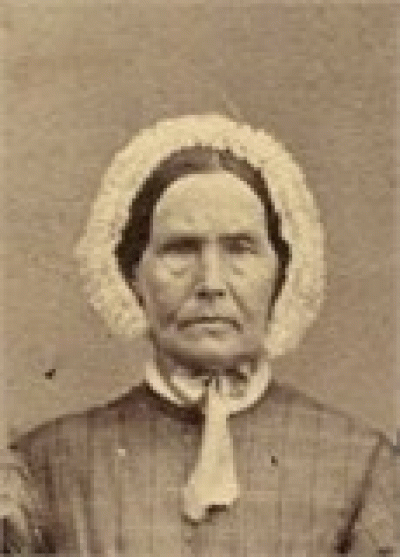OttawaFamilyTree on Family Tree Circles
Journals and Posts
Thomas FROOD, discovered Frood Mine near Sudbury, ON
Thomas Frood (1837-1916)
Adapted from the Canadian Dictionary of Biography entry
by R.?Matthew Bray
FROOD, THOMAS, teacher and prospector; b. 23?April?1837 in McNab Township, Upper Canada, son of Thomas Frood, a farmer, and Barbara Forrest; m. first 18?Aug.?1865 Mary Matilda Biggar (d. 1886) in Hamilton, Upper Canada, and they had two daughters; m. secondly 14?Aug.?1889 Christina McKay in Tiverton, Ont.; d.?5?May?1916 in Wallace Mine, Ont., and was buried in Kincardine.
????? A son of Scottish immigrants, Thomas Frood led a peripatetic existence for the first 25 years of his adult life. He taught school in communities throughout Ontario, including Hamilton, Aldborough and Trafalgar townships, Burnstown, Gillen?s Springs, and Kincardine. While in Hamilton he was decorated for his service with the 13th Battalion?s medical corps during the Fenian raids. Along the way he found time to become a pharmacist and manage a drugstore in Southampton.
????? In 1883 Frood left his teaching post in Kincardine for the wilds of northern Ontario. He worked for the Canadian Pacific Railway as a timekeeper on a construction crew and then, in mid decade, for the Department of Crown Lands as a woods ranger. Enthralled by prospecting, but with no particular expertise in the field, he was like most of the other men who became legendary in mining in the Sudbury region. Identifying gossan ? the tell-tale rust stain on outcroppings that indicated valuable mineral deposits -- was not difficult. By November?1883 Frood had noted indications of a mineral deposit in a railway cut west of Sudbury. But in October?1884, others would patent this location, later the Murray mine, but Frood claimed to be the first to assay the ore and prove the presence of copper.
????? The discovery of the property that would bear his name, the famous Frood mine, occurred in May?1884 when, acting on a trapper?s report, Frood and A.?James Cockburn prospected lots 6 and 7 of concession 6, McKim Township. The two men fell out. Frood took out the patent for the south half of 7 while Cockburn patented 6, which he transferred to two speculators from Pembroke, John H.?Metcalf and William Balmer McAllister. Like most prospectors, Frood lacked the money to develop mining properties, and normally settled for finder?s fees. In 1888 he would complain to the provincial royal commission on mineral resources that he was forced to ?give away 95 per cent. of mineral land to secure the other 5 per cent.?
????? Frood sold parts of Lot 7: a quarter to fellow prospector Peter Campbell and a third to Robert J.?Tough. For several of his other discoveries, such as Lady?Macdonald (1884) and Copper Cliff (1885), both of which were patented to Metcalf and McAllister, he received only a few hundred dollars each. Extremely bitter, he hoped that ?in the coming changes of relations of Capital and Labor, there will .?.?. be more encouragement given to individual effort and less crushing by capitalists.?
????? A few prospectors, among them Tough and Rinaldo McConnell, proved adept at transforming discoveries into wealth. And Frood himself did not do badly out of his remaining share of Lot 7, which he had refused to sell to Metcalf and McAllister. In 1886 Frood, Campbell, and Tough negotiated with Samuel J.?Ritchie, president of the Canadian Copper Company, who was anxious to buy what promised to be (and was) one of the richest deposits in the district. The three drove a hard bargain, receiving $30,000, with $12,500 going to Frood. (By comparison, Ritchie had paid Metcalf and McAllister only $13,000 for 5 properties less than a year earlier.)
????? Frood continued to prospect, from Thessalon to Mattawa, but he made no more strikes of any magnitude. By 1889 he moved to Wallace Mine, a community at the mouth of the Whitefish River on Lake Huron?s north shore. He lived there for the remainder of his days, working as a farmer and labourer, investing in mineral properties and timber limits, mining on a small scale, and writing the occasional newspaper article boosting northern Ontario.
References:
AO? ? Archives of Ontario, RG 80-5-0-166, no.1699; RG 80-8-0-596, no.21208; RG 80-27-2, 82: 142. INCO Arch. (Sudbury, Ont.), Box 932-23 (Canadian Copper Company, minute-book no.1), 16?Oct.?1886; Box 940-02, Frood to S.?J.?Ritchie, 21?May?1886. NA? ? National Archives of Canada , RG 31, C1, 1901, Mouth Whitefish River, Nipissing Dist., Ont.: 2 (mfm. at AO). Sudbury Star, 13?May?1916. Canadian Mining & Mechanical Rev. (Ottawa), 11 (1892): 42?43. Charles Dorian, The first 75 years; a headline history of Sudbury, Canada (Ilfracombe, Eng., [1959]). D.?M.?LeBourdais, Metals and men: the story of Canadian mining (Toronto, 1957). Ont., Royal commission on the mineral resources of Ontario and measures for their development, Report (Toronto, 1890); Royal Ontario nickel commission, Report, with appendix (Toronto, 1917).
Kilby, Osgoode, ON, Canada
Looking for the Kilby line from the Osgoode Township area (includes Ottawa ON) Canada.
Ellen Kilby (about 1819, ?Ireland -- 1879, Osgoode ON) married James Doyle (1812-1888). I know of 3 children, William, James and Mary.
Mary Doyle married Matthew O'Connor.

- Displaying 1-2 of 2 Journals
- PAGE:
- 1
- of1


